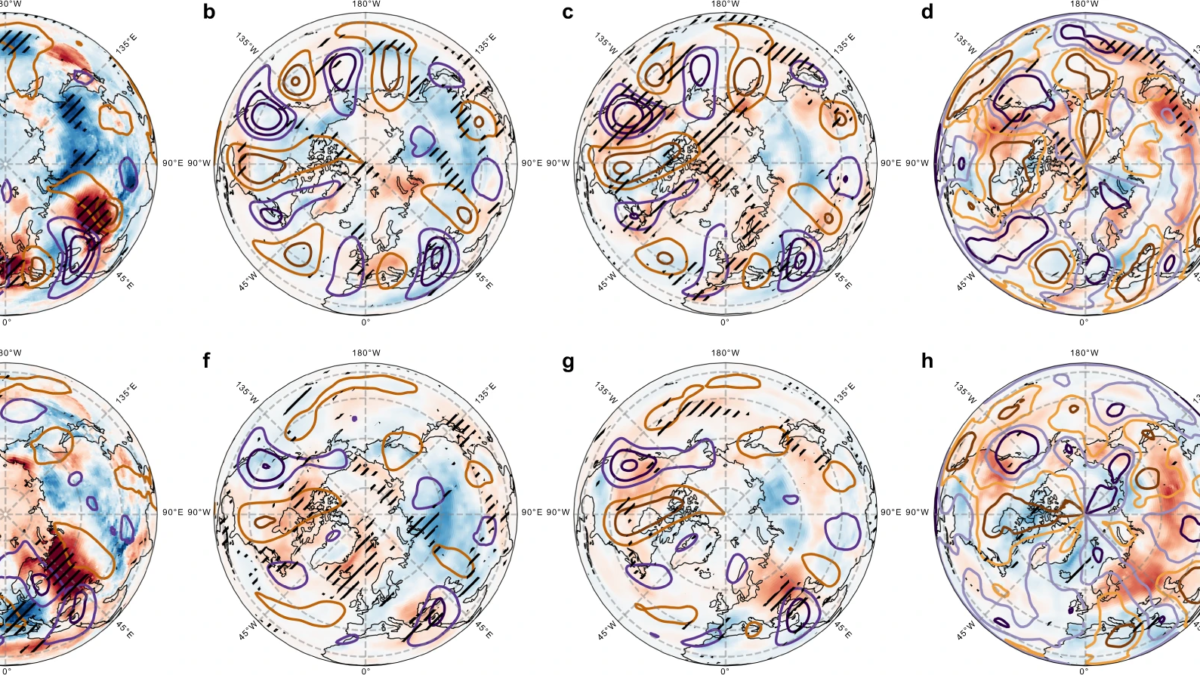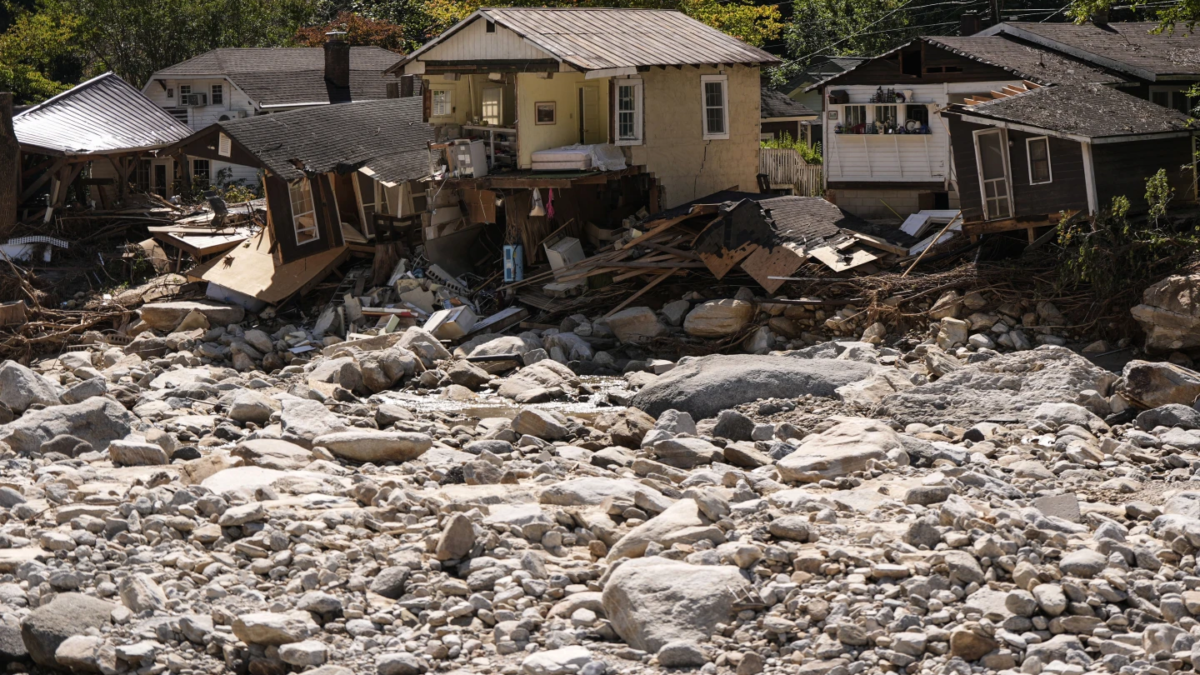More than 9.5 million people stranded after deadly floods hit India and Bangladesh – “The flooding is the worst in 122 years in the Sylhet region”
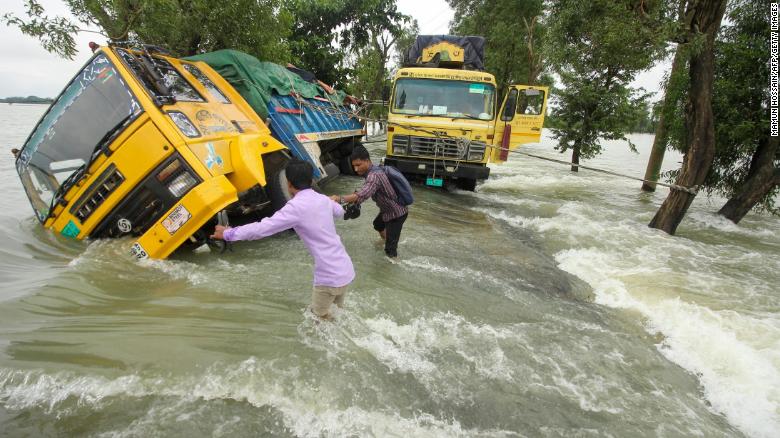
By Swati Gupta and Rhea Mogul
22 June 2022
NEW DELHI (CNN) – Millions of people across India and Bangladesh have been affected by raging floods and landslides that left more than 100 people dead and entire communities devastated.
The South Asian nations, home to more than 1.3 billion people, have been particularly badly hit by the rains, prompting some of the worst flooding in the region in years, as extreme weather events become increasingly frequent due to the climate crisis.
In India, at least 48 people have died since June 14, after heavy rains battered the northeastern state of Assam, according to its disaster management authority, triggering landslides and causing riverbanks to swell. More than 5.5 million people have been affected in the state alone, the authority added.
Assam’s Chief Minister, Himanta Biswa Sarma, on Tuesday visited one of the 1,687 relief camps, housing more than 260,000 displaced people in the state.
“Our Govt will soon launch a portal for the affected people to register their livestock loss and other damages caused by floodwaters,” he wrote on Twitter. “A flood relief package too will be announced shortly.”
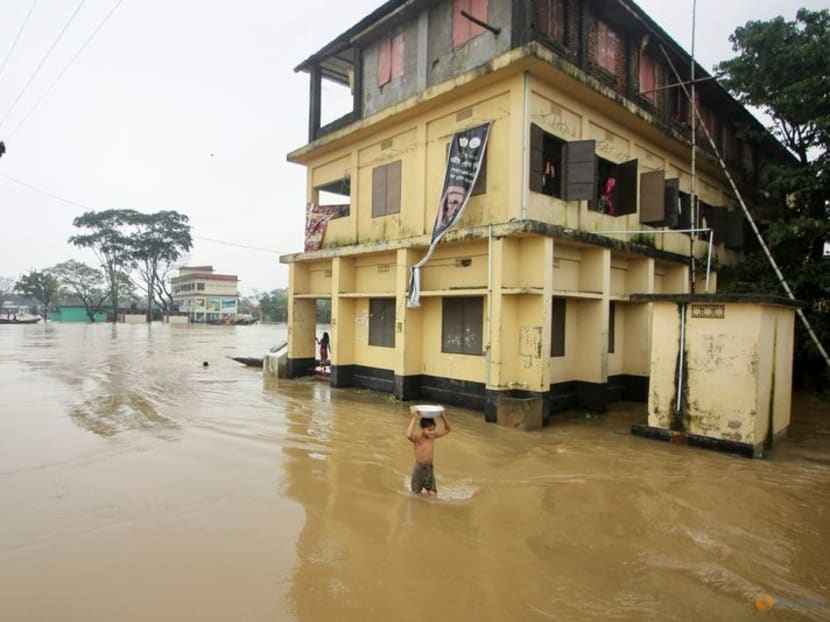
In the nearby state of Meghalaya, at least 25 people have died since June 9, with 11 still missing and 22 more injured, according to state officials.
Video broadcast on local television showed people in affected cities wading waist deep in muddy water and streets turned into rivers, with vehicles submerged underwater.
In neighboring Bangladesh, flooding-related incidents, including electrocutions and landslides, have killed at least 22 people, according to officials.
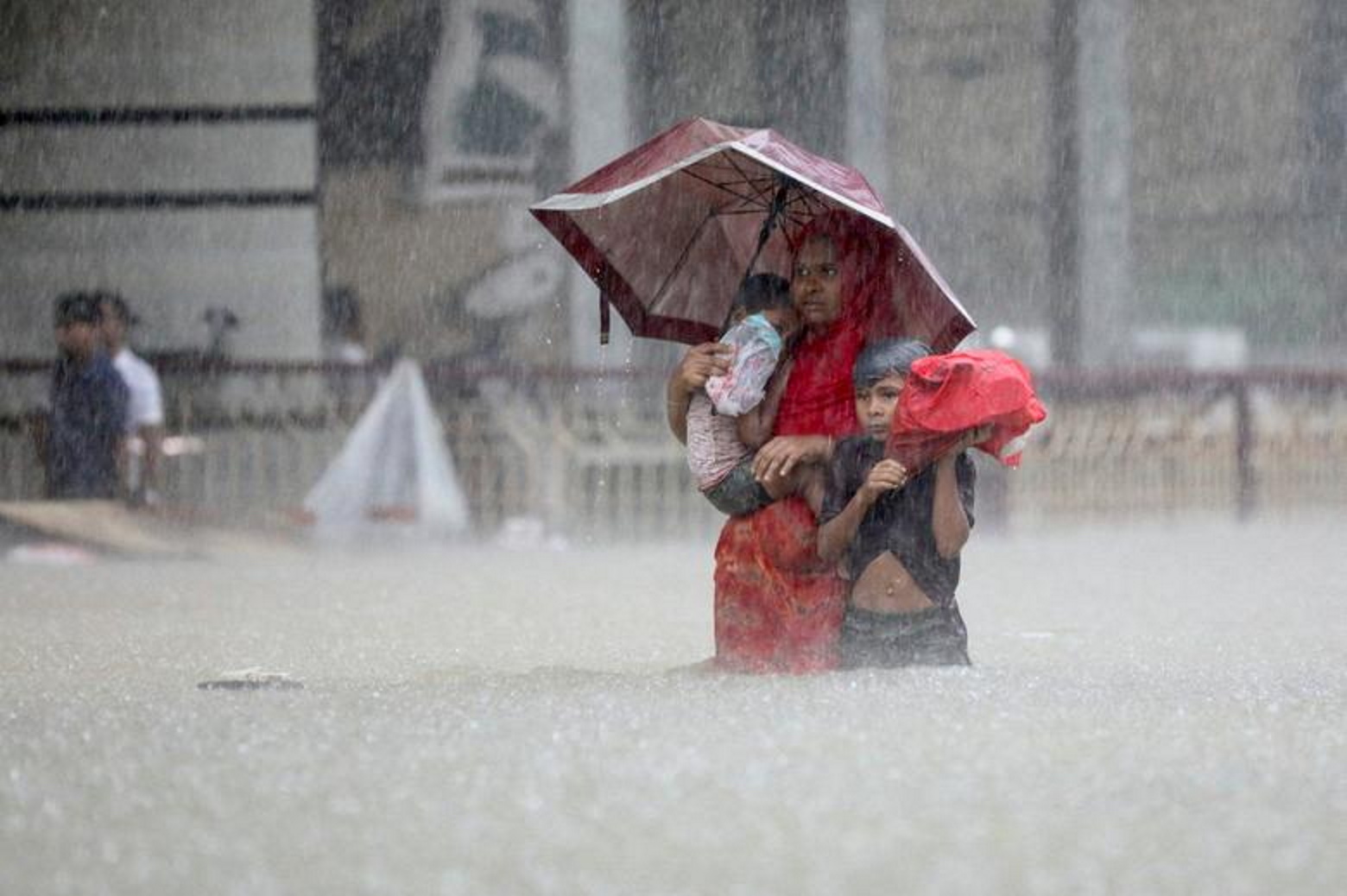
As many as 4 million people, including 1.6 million children, have been stranded by the flash floods, according to UNICEF.
“Children need safe drinking water right now. Preventing deadly waterborne diseases is one of several critical concerns,” Sheldon Yett, UNICEF Representative to Bangladesh, said in a statement Monday.
The downpour has caused catastrophic flooding in the northeastern Sylhet region, local officials said.
“The flooding is the worst in 122 years in the Sylhet region,” Atiqul Haque, Director General of Bangladesh’s Department of Disaster Management, told Reuters on Monday. [more]
Millions affected after deadly floods hit India and Bangladesh
Bangladesh, India floods kill over 100; millions in need of aid
21 Jun 2022 (Al Jazeera) – Floodwaters have inundated more of Bangladesh and northeast India, officials say, as authorities struggle to reach more than 9.5 million people stranded with little food and drinking water after days of intense rain.
Particularly heavy monsoon rain has brought the worst floods in decades in some parts of low-lying Bangladesh and India’s Assam state, killing more than 100 people over the past two weeks.
Monsoon rains in South Asia typically begin in June. But this year heavy downpours lashed northeastern India and Bangladesh as early as March, triggering floods as early as April in Bangladesh.
With rising global temperatures due to climate change, experts say the monsoon is becoming more variable, meaning that much of the rain that would typically fall in a season is arriving in a shorter period.
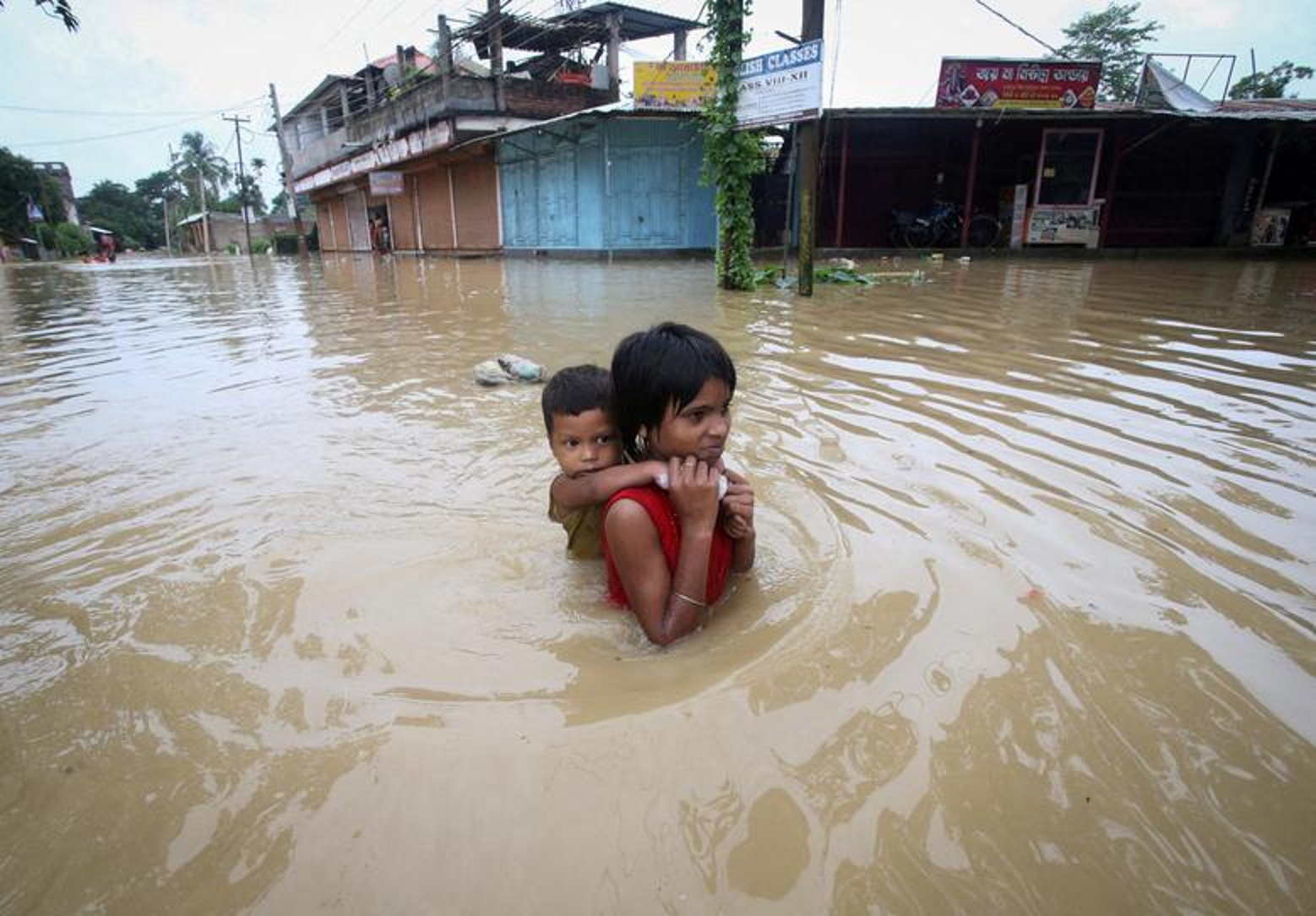
Bangladesh PM visits flood-hit areas
Bangladeshi Prime Minister Sheikh Hasina flew over some of the flood-hit areas on Tuesday, looking down on huge tracts covered by brown water, broken up by an occasional outcrop of land, television footage showed.
So far, Bangladesh authorities have reported at least 32 deaths.
In Sylhet, one of the worst-hit areas in the extreme northeast of the country near the border with India, villagers waded, swam and paddled makeshift rafts or small skiffs to a boat delivering aid that had moored to one shelter, its ground floor covered half way to the ceiling with water.
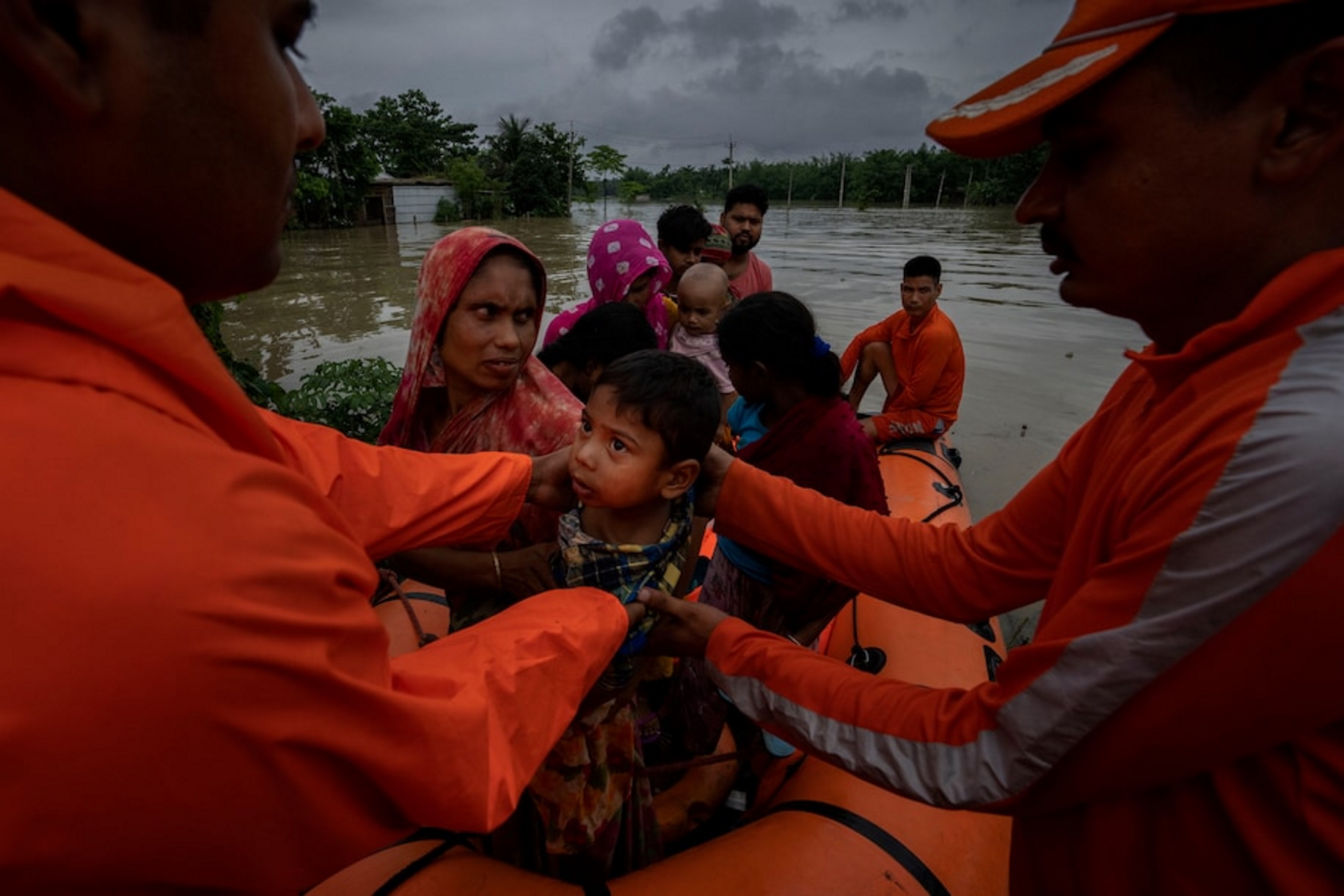
Reporting from Sylhet, Al Jazeera’s Tanvir Chowdhury said “things are much more severe and worse in rural areas” of the district.
“We drove miles and miles and saw village homes washed away and submerged. People are desperately in need of dry shelter, they need fresh water and food,” he said. “We have visited shelters which are overcrowded and are getting very limited relief.”
Chowdhury said more than 100,000 people have been evacuated from the area but many still need rescuing. “Many experts and people are urging the government to declare this region as an emergency disaster zone,” he said. […]
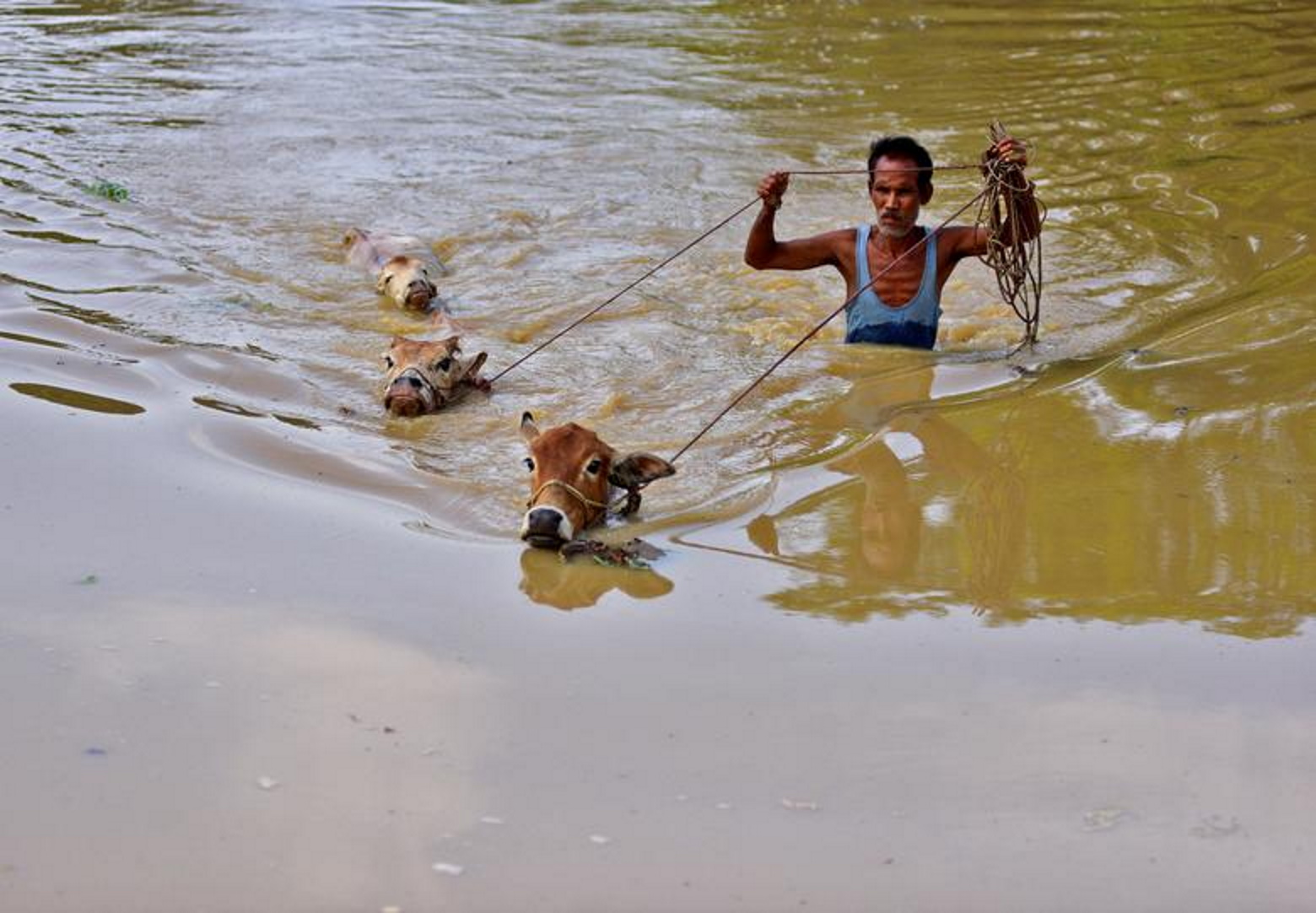
UNICEF said about four million people have been cut off by the floods in the country’s northeast and are in urgent need of help.
The UN agency also said 90 percent of its health facilities have been inundated and cases of waterborne diseases are increasing, as it urgently sought $2.5m to supply water purification tablets, emergency medical supplies and water containers.
“Four million people, including 1.6 million children, stranded by flash floods in northeastern Bangladesh are in urgent need of help,” UNICEF said in a statement. […]
Al Jazeera’s Pavni Mittal, reporting from Nellie in Assam, said a lot of flood-affected people are farmers who are struggling to save their livestock.
“Residents also told us that just like in Bangladesh, there is a crisis of drinking water. People don’t have electricity. So they have not been able to filter water and families have been scrambling to get drinking water,” she said. […]
Assam and neighbouring Meghalaya state have received 134 percent more rainfall than the average at this time of the year, according to data from the state-run India Meteorological Department.
In Mawsynram and Cherrapunji, among the world’s wettest areas on the southern fringes of Meghalaya that overlook Bangladesh’s plains, more than 970 millimetres (38 inches) of rain was recorded on Sunday alone, according to the meteorological department. […]
“I am 80 years old and have never witnessed such devastation in my life,” said Majaharul Laskar, a retired government official in Silchar. [more]
Bangladesh, India floods kill over 100; millions in need of aid
